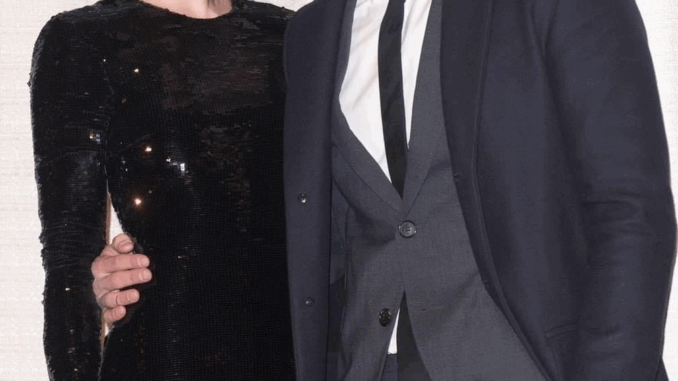
When Fifty Shades of Grey was first announced, fans of the controversial books erupted with excitement—and skepticism. Who would play Christian Grey, the icy billionaire with a dark secret? Who could possibly bring Anastasia Steele to life, a woman both naïve and quietly daring? When Dakota Johnson and Jamie Dornan were finally cast, reactions were… mixed. Some fans said they lacked the “look.” Others claimed the two had no spark. But then the movie hit theaters—and everything changed.
Because what unfolded on screen was something no one predicted: fire.
Yet here’s the twist—Dakota and Jamie? They didn’t even like each other at first.
In fact, multiple sources from the production confirmed that their relationship started off cold, awkward, and even slightly tense. Jamie, still grieving the loss of his mother and adjusting to overnight stardom, was distant and often withdrawn. Dakota, despite her Hollywood upbringing, was thrown into the most intense project of her career. They didn’t bond over coffee. There were no inside jokes. For weeks, they barely spoke unless they had to.
And maybe that’s exactly why it worked.
Their emotional distance bled into the characters’ story—Christian’s need for control, Ana’s quiet resistance. The result? A relationship that simmered with tension. Every moment between them felt charged, uncertain, almost dangerous. The scene where Christian first undresses Ana wasn’t romantic—it was explosive. Audiences leaned in, sensing something unfiltered underneath the lines. Was it acting… or something real?
Even stranger, as the trilogy progressed, their personal relationship evolved—but not into love or even deep friendship. Instead, they developed what Dakota once called “a very bizarre bond.” They weren’t close in a typical way, but they understood each other’s limits. They weren’t affectionate, but they trusted each other in vulnerable, terrifying scenes. It was intimacy without emotion—perfectly mirroring the story of Christian and Ana.
And here’s the eerie part: according to one anonymous crew member, “Sometimes it felt like they hated each other just enough to make it believable.”
It’s almost ironic. In a franchise built around passion, love wasn’t the fuel—friction was. The kind that can’t be faked. The kind that makes you feel uncomfortable, even when nothing explicit is happening. That’s why the infamous “first touch” scene became a fan favorite—it wasn’t about desire. It was about danger. Ana didn’t know what she was stepping into. Neither, maybe, did Dakota.

By the time Fifty Shades Freed arrived, the actors were exhausted—but the chemistry had only intensified. Because now, they weren’t strangers pretending to be lovers. They were co-survivors of something cinematic, intense, and emotionally unrepeatable. They didn’t fall in love. They didn’t even stay close after filming ended. But for three films, they were tethered by something rare: perfectly mismatched energy.
And that’s the final twist.
The casting that no one believed in.
The actors who didn’t connect.
The passion that shouldn’t have existed.
It happened anyway. And it left a mark that no amount of studio polish could ever plan.
Sometimes, the best chemistry isn’t born from compatibility.
Sometimes, it’s born from the tension of two people trying not to fall into each other—and failing, scene after unforgettable scene.
